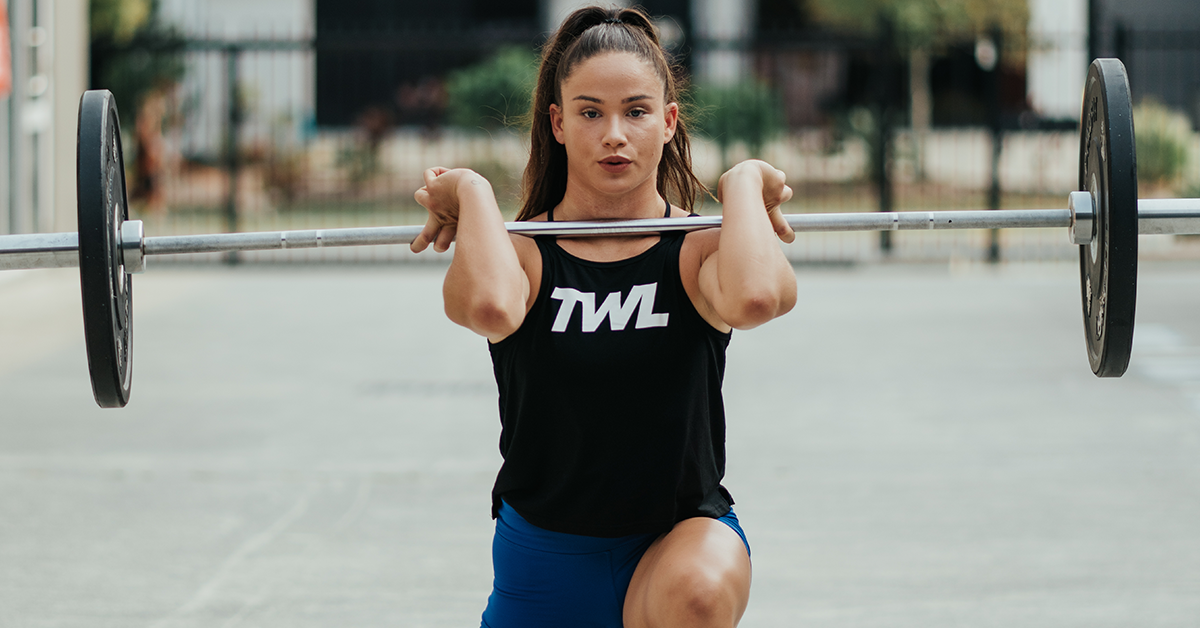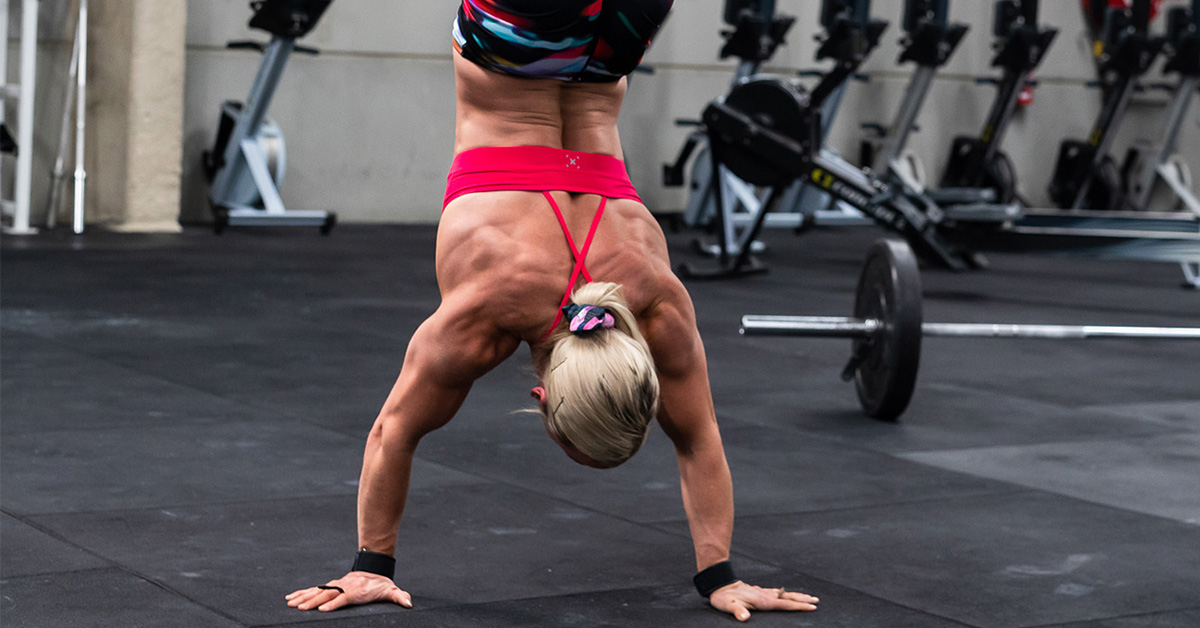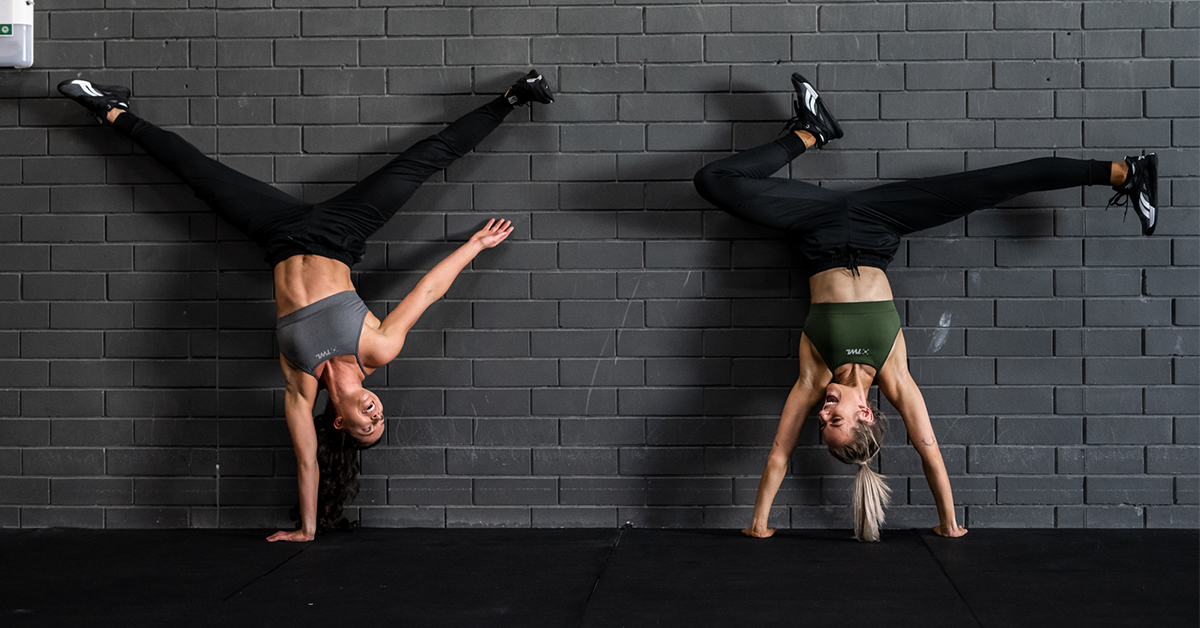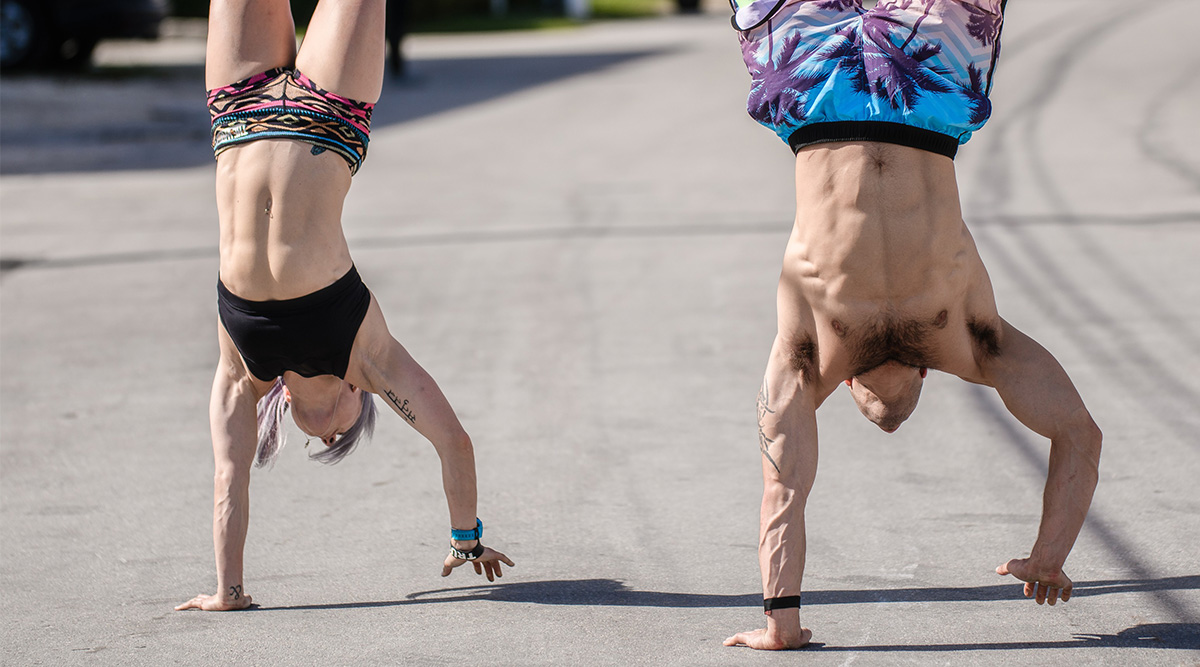We all want to hit beast mode in the gym, but some movements are just too difficult to do Rx’d right off the bat. One of the tougher ones you’ll likely encounter is the wall walk, which calls for good handstand strength, core strength, balance, and stability. Although it requires only a wall and a bit of space, it’s more complicated than it sounds.
How to Do the Wall Walk
First, let’s break down the movement.
- Put yourself in a push-up position. Lay face down on the floor, with your feet touching the wall behind you. See to it that your hands, quads, and chest are flat on the ground. Keep your spine neutral and your head down.
- Slowly walk your feet up the wall, with your hands following suit. This is a tough move, so keep your core as tight as possible. Push up through your shoulders, and keep your back straight. If your back starts to arch, you risk hurting your neck and shoulders.
- Halfway through the wall walk, you should be in an upside-down position, facing the wall.
- Gradually walk your feet down, and move your hands away from the wall. This puts you back in your starting position.
Putting it together, this is what it looks like:
You might do wall walks on your way to mastering handstands, handstand push-ups, or handstand walks. However, they’re an incredible exercise in and of themselves. You might do them for reps in a WOD.
If you need extra support for your joints, you might find wrist wraps really helpful for this. Shop our full selection.
Shop Now
The Benefits of Wall Walks
While they might not look like anything fancy, wall walks demand strength, endurance, and serious shoulder mobility. They can help you:
- Build upper-body strength.
- Improve balance, stability, and coordination.
- Build and strengthen muscles, particularly in the core, chest, legs, triceps, and shoulders.
Plus, if you’ve got a fear of flipping upside-down (totally understandable!), wall walks are a simple way to help you overcome that.
These benefits will translate to many other things you do in the gym.
How to Scale Wall Walks
If you cannot do a wall walk just yet, there are ways to make it more manageable as you work your way toward it. Scale it to gradually help you build up the strength to do it safely in proper form.
Scaling means modifying an exercise or workout based on your fitness level. There are endless scaling options for the wall walk, from doing a few reps with the same intensity to using a box instead of a wall. (But before scaling it, take into account the stimulus of the workout, your fitness level, and your routine requirements.)
Here are a few scaling options for wall walks.
Inchworm
Not yet entirely comfortable in an upside-down position? Try the inchworm exercise first. The inchworm routine strengthens the core, shoulders, back, chest, and arms without any equipment. It’s often incorporated into high-intensity activities as a warmup routine.
Here’s how to do it. Stand straight, feet shoulder-width apart, with your arms down by your sides. Keep your legs as straight as possible as you bend over to touch the floor. Then, walk your hands from your legs as far as you can. Move your body forward until you find yourself in a high plank position. Gradually get back to the starting position by moving your hands towards your feet.
Use a Box Instead of a Wall
Instead of putting your feet against a wall, find a box and place your feet on it. Then, walk your hands out and back in, just like you would do in the inchworm exercise. You can further modify this to make it more challenging by changing the height of the box.
Pike Plank
The pike plank, a more challenging variation of the traditional plank, is just one of the many pike exercises that can help you reach your goal as a wall walk pro. A plank is a beginner-friendly routine that can be easily modified and incorporated into day-to-day workouts.
It starts in a plank position, with the feet hip-width apart. Keep your back straight. Next, move your hips upwards until you reach an upside-down V position. Aim as high as possible. Once you get to the apex, pause for a moment and lower yourself to return to your starting position.
Pike planks are not just a stepping stone towards a smooth wall walk. They can also alleviate back pain and improve your posture.
Cartwheels
Sure, we did them as kids, but did you know that cartwheels are a neat way to scale wall walks?
Step forward with one leg and extend your arms above your head. Now, it’s time to do a full rotation. First, bend your upper body forward. Next, place your hands on the floor, and your feet, up in the air. Then, return to a standing position, as if you are attached to a wheel.
This move puts your body weight on your shoulders, so it can be hard to do first. If you can, maintain balance in this position. If you are having difficulty maintaining balance, try doing a cartwheel against the wall.
Walk Up Only as Far as You Can
A wall walk is still a wall walk even if you’re not 100% up against the wall! Can you only get halfway? That’s great too. Baby steps.
Final Tips
Now that you know what it takes to master the wall walk, we’d like to leave you with a few final pieces of advice.
- Always warm up! Warmups, including stretching and light cardio to get your heart ready, prepare your body for exhausting physical activity. In the case of the wall walk, pay special attention to shoulder mobility.
- If you can’t move your hands closer to the wall just yet, try walking your feet up as high as you can. Then, try to hold it for around five to seven seconds for each rep.
- Save yourself from fast burnout by keeping your arms straight while walking.
- Focus on the quality of your movements. It’s better to do fewer reps with full control than to complete the workout with sub-par form.
- Maintain the intention of your workout. For instance, if the WOD is high-rep, focus on speed during your wall walks. Even if you scale down the reps, you want to achieve the same stimulus.
Now that you fully understand what a wall walk is, it’s time to get to work! As you train, focus on maintaining the correct form, balance, and quality of your movement. Regardless of how many modifications you might make, the more you train, the easier the wall walk will be.

















